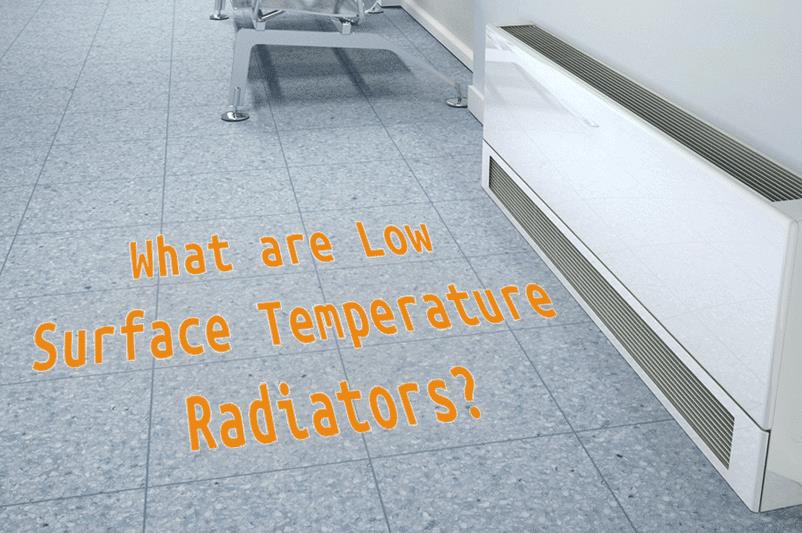
There's a delicate balance when trying to find your perfect radiator; most customers will be concerned with both the unit's heating efficiency and its visual appearance. It's important to find a radiator that fulfils both of these requirements and low surface temperature (LST) radiators offer a safe, stylish solution to your needs.
Traditional radiators function with the processes of radiation and convection, which can result in extremely high surface temperatures, as hot as 50°C. This has meant that radiators have always been a safety concern for homeowners, particularly in homes where children are present, as even brief contact could inflict painful and potentially dangerous burns.
With modern radiators having such varying output demands, often being adjusted manually throughout the day and night and needing to change depending on the comfort of the property's occupants. It's important that radiators are able to adapt to this change as rapidly as possible, allowing for quick temperature adjustments. The large volume of water and sizable units of traditional radiators make them slow to adjust to temperature changes, while LST radiators have lower water volume, increasing their speed.
Low surface temperature radiators heat rooms primarily through convection, taking in air, heating it and then reintroducing it to the room through an outlet. By actively distributing warm air into their surroundings, LST radiators are every bit as effective at heating a room as traditional radiators, which heat exclusively through air contact with their surface. This convection process is aided by using low water content heat emitters, having as little as 10% of the mass of their traditional counterparts . This reduced water capacity makes them far more responsive to temperature changes and results in far more accurate user control. Tests have shown that LST radiators can be as much as three times quicker to change temperature than their traditional radiator and underfloor heating counterparts.
By constantly monitoring the temperature of their surroundings, thermostatic LST radiators can ensure your room stays at exactly the temperature you've chosen and means you can be comfortable all day without having to control the unit manually. The slight adjustments made by the radiator to ensure room temperature stays at the desired level means mean they offer a comfortable, efficient heating system throughout your home. Even while they're operating at a high temperature, LST radiators are not dangerously hot to touch. By isolating the casings from the copper tubes within, surface temperature stays at a safe level, creating the cooler surface that gives them their name. LST radiators provide a greater degree of comfort to their owners thanks to the precise way that they maintain temperature. They are excellent at reacting to temperature changes, making them a sensible choice for regions with inconsistent climates.
The increased safety of LST radiators makes them an excellent choice for a wide range of applications, ideal for landlords looking to install safe heating into hotels or rental properties. They're also a much better choice for properties with vulnerable people, such as schools and nursing homes, guarding visitors and residents from potential burns. LST radiators from reputable names such as Myson and Stelrad are compliant with the most recent guidelines regarding maximum water and surface temperature, ensuring you're protected as a either homeowner or landlord.
Regarding the healthcare sector, the NHS Safe Surface Temperature rules mean that heating surfaces in NHS facilities must be limited to a maximum of 43°C, making LST radiators an essential feature of modern hospitals and surgeries. In addition, the way LST radiators function allows for flat, smooth surfaces, allowing for easier cleaning, resulting in a radiator that is both convenient and more hygienic. Many LST units are coated with anti-bacterial, MRSA resistant paint, making them an even better choice for use in hospitals and protecting patients from more than just heat.
Despite LST radiators themselves being much safer than traditional units, it's important to remember that the same might not apply to nearby pipes. If you're installing a LST radiator for safety reasons, take the time to ensure that the pipes supplying it are sufficiently insulated in order to protect vulnerable people.
Stelrad and Myson are the industry leaders in low surface temperature radiators and HeatandPlumb.com offers a range of more than a hundred options from each of their collections. Both manufacturers include generous guarantees with their LST radiators, adding extra reassurance to their already reliable heating units. Maintenance is relatively simple; as the unit's casing is a single piece held on with brackets, it can be quickly taken off to allow access to the internal workings of the heater. There's no need for specialist tools in order to perform maintenance on an LST radiator.